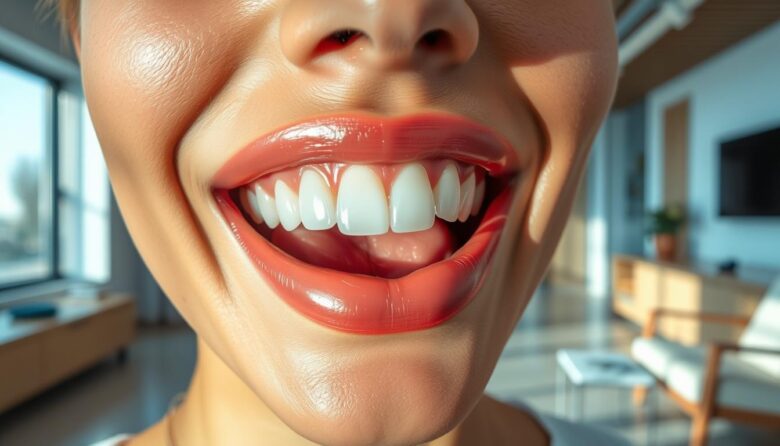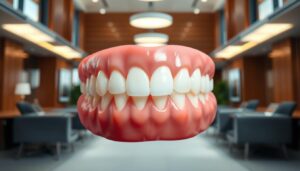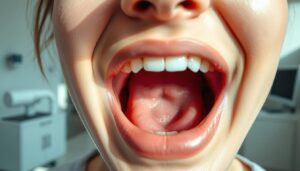Healthy teeth and gums are essential for overall well-being. The foundation of a strong oral care routine starts with understanding what healthy gums look like. Firm, pink, and properly attached to the teeth, they are a sign of good hygiene.
Plaque, a sticky film of bacteria, can build up on teeth and along the gum line. If not removed through brushing and flossing, it can lead to gingivitis, the earliest stage of gum disease. Symptoms like redness, swelling, or bleeding should not be ignored.
Using fluoride toothpaste and a soft-bristled toothbrush helps remove debris and prevent plaque. Adding flossing to your daily routine cleans areas a toothbrush can’t reach. Regular dental visits are also crucial for early detection and treatment of potential issues.
By adopting these simple habits, you can keep your mouth clean and reduce the risk of gum disease. Stay tuned for more tips on effective oral care practices.
Understanding Healthy Gums and Their Role in Oral Health
Strong oral care starts with recognizing the signs of healthy gums. They play a crucial role in supporting your teeth and keeping your mouth free from harmful bacteria. Knowing what to look for can help you identify potential issues early.
What Healthy Gums Look Like
Healthy gums are firm, pink, and fit snugly around each tooth. They don’t bleed during brushing or flossing and show no signs of swelling or tenderness. Proper adhesion to the teeth ensures they provide a strong foundation for your smile.
Common Signs of Unhealthy Gums
Unhealthy gums often appear red, swollen, or tender. Bleeding during brushing or flossing is a clear sign of trouble. Persistent bad breath can also indicate a problem. These symptoms may point to gingivitis, the earliest stage of gum disease.
Plaque build-up along the gum line is a common cause of these issues. If not removed through proper cleaning, it can harden into tartar, leading to more serious conditions like periodontitis. Regular visits to a dentist can help catch and treat these problems early.
By paying attention to these signs and maintaining a consistent routine, you can keep your gums in great shape. Early detection and proper care are key to preventing long-term damage.
Essential Dental Hygiene Practices
Good oral hygiene is the cornerstone of a healthy smile. It involves more than just brushing; it’s about adopting habits that protect your teeth and gums for the long term. Let’s explore the key practices that make a difference.
Proper Brushing Techniques
Brushing your teeth correctly is the first step to preventing plaque and gum disease. Use a soft-bristled toothbrush and fluoride toothpaste. Hold the brush at a 45-degree angle to your gums and use gentle, circular motions. Brush for at least two minutes, twice a day.
Electric toothbrushes can be especially effective. They remove more plaque and debris than manual brushing. Remember to replace your toothbrush or brush head every three months or when the bristles fray.
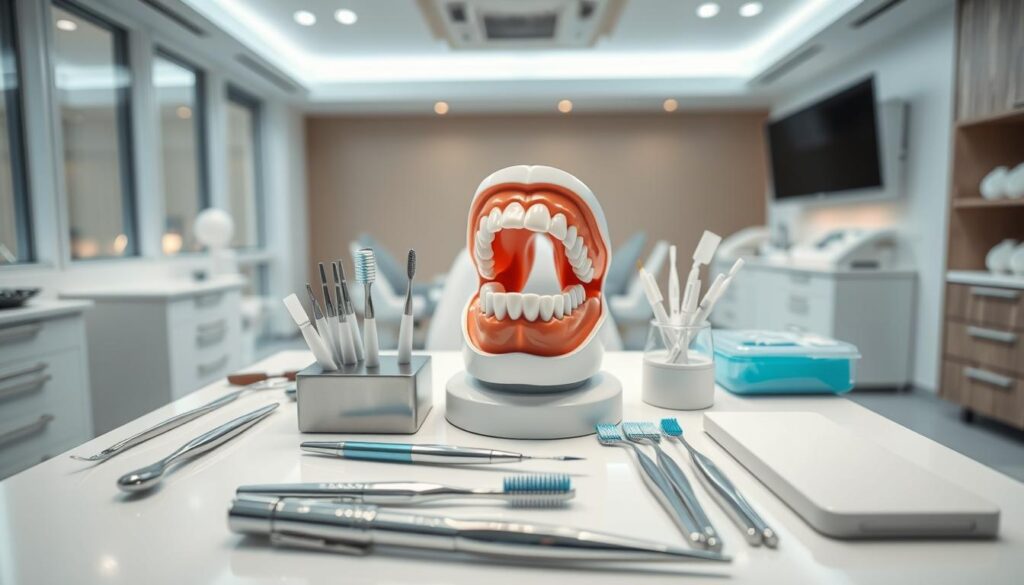
Flossing and Interdental Cleaning
Flossing is essential for removing plaque and food particles between teeth. Use about 18 inches of floss, winding it around your fingers and gently sliding it between each tooth. Curve the floss around the base of each tooth to clean below the gum line.
Interdental brushes or water flossers can also be helpful. These tools reach areas that traditional floss might miss, ensuring a thorough cleaning.
Importance of Regular Dental Visits
Visiting a dentist every six months is crucial for maintaining oral health. Professional cleanings remove tartar buildup that brushing and flossing can’t eliminate. Dentists can also spot early signs of gingivitis or periodontitis, preventing more serious issues.
Regular check-ups ensure that any problems are addressed before they worsen. Combining professional care with daily habits is the best way to keep your mouth healthy.
Maintaining Gums Health Guide: Expert Tips and Strategies
Your oral care routine can be elevated with the right tools and techniques. Choosing products that meet your needs is essential for preventing issues like plaque buildup and gingivitis. Let’s explore how to select the best fluoride toothpaste and therapeutic mouthwash for your daily routine.
Choosing the Right Fluoride Toothpaste
Fluoride toothpaste is a cornerstone of effective oral hygiene. It strengthens enamel and helps prevent cavities. When selecting a product, look for the ADA Seal of Acceptance, which ensures it meets strict safety and efficacy standards.
Dental research shows that fluoride reduces the risk of tooth decay by up to 25%. Brands like Colgate and Crest offer a variety of options, including whitening formulas and sensitivity relief. Choose one that aligns with your specific needs.
Benefits of Therapeutic Mouthwash
Therapeutic mouthwash is a valuable addition to your routine. It targets bacteria that cause plaque and bad breath. Unlike cosmetic mouthwashes, therapeutic options contain active ingredients like fluoride or antimicrobial agents.
Using mouthwash daily can reduce the risk of gingivitis by up to 21%. Products like Listerine Total Care are ADA-approved and provide comprehensive benefits. Pairing it with brushing and flossing ensures a thorough clean.
By combining the right toothpaste and mouthwash, you can support overall oral health and prevent disease. These expert tips make it easy to maintain a healthy smile every day.
Diet, Lifestyle, and Their Impact on Gum Health
What you eat and how you live can significantly influence your oral well-being. A balanced diet and healthy habits are essential for keeping your mouth in top shape. Let’s explore how nutrition and lifestyle choices affect your gums and teeth.
Gum-Friendly Nutritional Choices
Eating the right foods can strengthen your gums and prevent decay. Foods rich in calcium, like dairy products, help build strong teeth. Vitamin C, found in citrus fruits and bell peppers, supports gum strength and reduces the risk of bleeding.
Fiber-rich foods, such as broccoli and apples, stimulate saliva production. Saliva naturally washes away plaque and bacteria. Drinking fluoridated water also helps protect your teeth by strengthening enamel and reducing harmful bacteria.

Incorporating these foods into your daily routine can make a big difference. “A healthy diet is not just good for your body; it’s essential for your mouth,” says a leading dentist.
Smoking and Its Effects on Gum Health
Smoking is one of the most harmful habits for your gums. It reduces blood flow, impairing the healing process and increasing the risk of gum disease. Smokers are more likely to experience issues like gingivitis and periodontitis.
Smoking also promotes bacterial colonization in the mouth, leading to plaque buildup and bad breath. Quitting smoking can significantly improve your oral hygiene and overall health.
“Kicking the habit is one of the best things you can do for your gums,”
advises a dental expert.
By making smart nutritional choices and avoiding harmful habits, you can protect your gums and teeth. Small changes in your diet and lifestyle can lead to long-term benefits for your oral health.
Recognizing and Preventing Gum Disease
Recognizing the early signs of gum disease can save your smile. This condition often starts subtly but can lead to serious oral problems if ignored. Understanding the symptoms and stages helps you take action before it worsens.
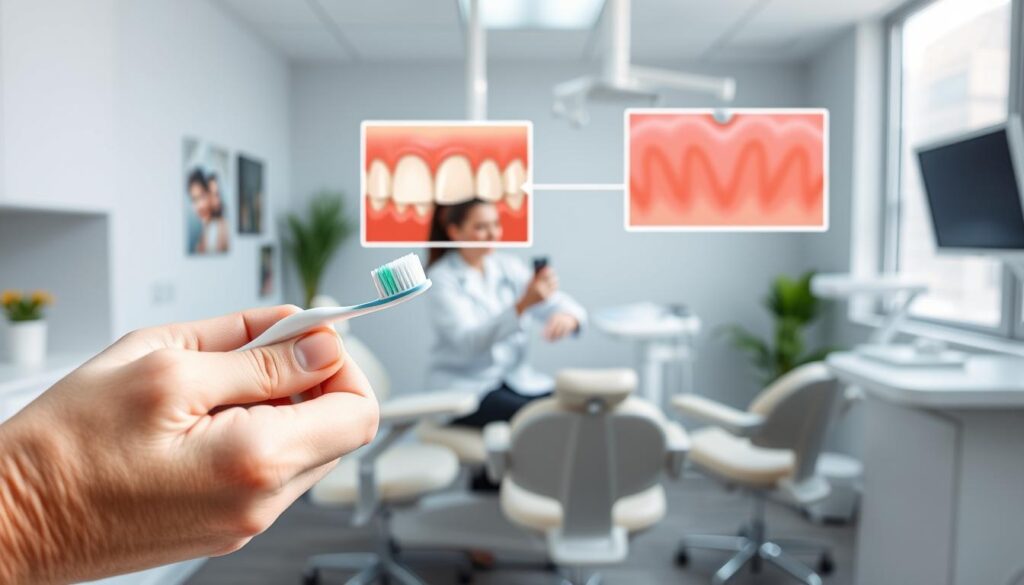
Early Symptoms and Warning Signs
Bleeding gums during brushing or flossing is a common early sign. Redness and swelling are also indicators of trouble. Persistent bad breath, even after brushing, can signal an underlying issue.
These symptoms often point to gingivitis, the first stage of gum disease. Plaque buildup along the gum line is usually the cause. If left untreated, it can progress to more severe conditions.
Understanding the Stages of Gum Disease
Gingivitis is reversible with proper care. It involves inflammation of the gums without bone loss. Regular brushing, flossing, and dental visits can restore health.
Periodontitis is the advanced stage. It damages the bone and tissues supporting the teeth. This stage is irreversible and may lead to tooth loss if not managed.
When to Consult a Dental Professional
If you notice persistent bleeding, loose teeth, or receding gums, see a dentist immediately. These are signs of advanced gum disease requiring professional treatment.
Regular check-ups are essential for early detection. The CDC recommends visiting a dentist every six months. Early intervention makes treatment easier and more effective.
“Catching gum disease early is the key to preventing long-term damage,”
says a leading dental expert. By staying vigilant and seeking timely care, you can protect your smile and overall oral health.
Conclusion
Taking care of your mouth is more than just a daily routine—it’s a commitment to your overall well-being. By brushing and flossing regularly, you can prevent plaque buildup and reduce the risk of gum disease. Recognizing early signs like redness or swelling ensures timely treatment and better outcomes.
Choosing the right products, such as fluoride toothpaste and therapeutic mouthwash, enhances your routine. Lifestyle choices, like eating nutrient-rich foods and avoiding smoking, also play a vital role in long-term oral health. These small changes can make a big difference.
For personalized advice, consult a dental professional. A holistic approach to care ensures your smile stays bright and healthy for years to come.

